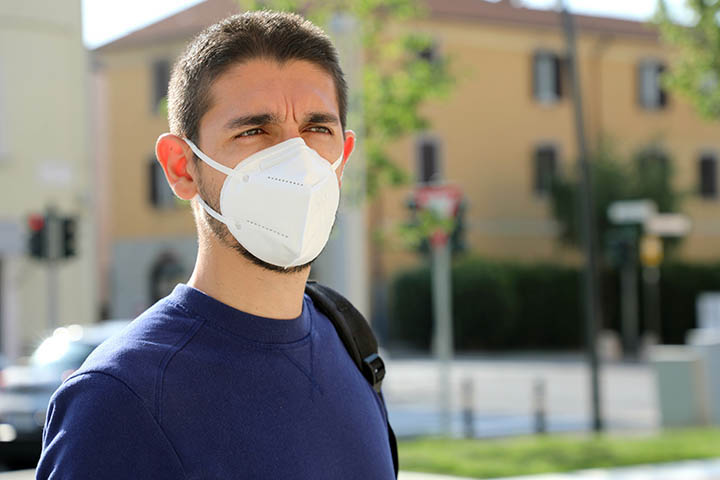Understanding the 3 Types of Masks for Covid-19 Protection

As the CDC learns more about COVID-19, one of the big discoveries has been that a significant portion of individuals may care the virus without having any symptoms (i.e., “asymptomatic”), and others who are positive may carry the virus before showing symptoms (“pre-symptomatic.” For these reasons, the CDC recommends people wear face coverings of some sort when they are interacting with individuals outside of their household.
While those are the CDC recommendations, people have their own opinions about whether or not masks are necessary. However, as a recent study found, customers don’t really care so much about what a person’s personal beliefs are on the matter. They want to feel safe dealing with your company during this pandemic. Having your team wear masks while cleaning helps add to that safety as well as your company’s professionalism.
So which type of mask should they wear? Let’s look at the differences.
Homemade Masks
Cloth face masks are typically made by individuals using common materials, and can be washed and reused. Cloth masks do not protect the wearer as much as they do other people. If a person is a carrier of COVID-19, a cloth mask can help prevent infected droplets from talking, sneezing, and coughing from becoming airborne and landing n surfaces (or people).
The CDC recommends washing cloth masks after every use. They also recommend washing or disinfecting your hands immediately after removing.
Surgical masks or procedure masks
These loose-fitting, disposable masks are made to cover your nose, mouth, and chin and again, they help the wearer not spread germs. Unlike cloth masks, surgical or procedure masks protect the wearer from large-particle droplets, and may help prevent the wearer from some germs from droplets (not airborne). These masks come in different shapes. (The ones we carry are flat and rectangular, with pleats.) Surgical masks have ties, while procedural masks – like the ones we carry – have ear loops. Our masks also have metal nose clips that allow the mask to conform better to your face for better protection. (These can also help keep glasses from fogging up as much.)
The CDC recommends replacing these masks after each use because they are contaminated with germs after being worn. They definitely need to be replaced if they become wet or torn because they will no longer be effective.
N95 Respirators
The N95 (or KN95) is actually a respirator, not just a mask. N95 masks are circular or oval-shaped, tighter fitting face masks, and protect not only from large droplets, but can also filter out tiny particles, including viruses and bacteria. (The “95” stands for the percentage of tiny particulates that the N95 can filter out.) The N95 mask is designed to form a tight seal to your face, and the elastic bands hold it firmly in place. Some people with facial hair cannot achieve a tight seal. These masks need to be fit tested in order to be correctly used.
No matter which type of mask you and your team wear, they will only help protect if they are worn correctly. You should also avoid touching the mask and wash or disinfect your hands immediately after taking it on and off. Finally, masks with valves do not protect your customers from coronavirus.



